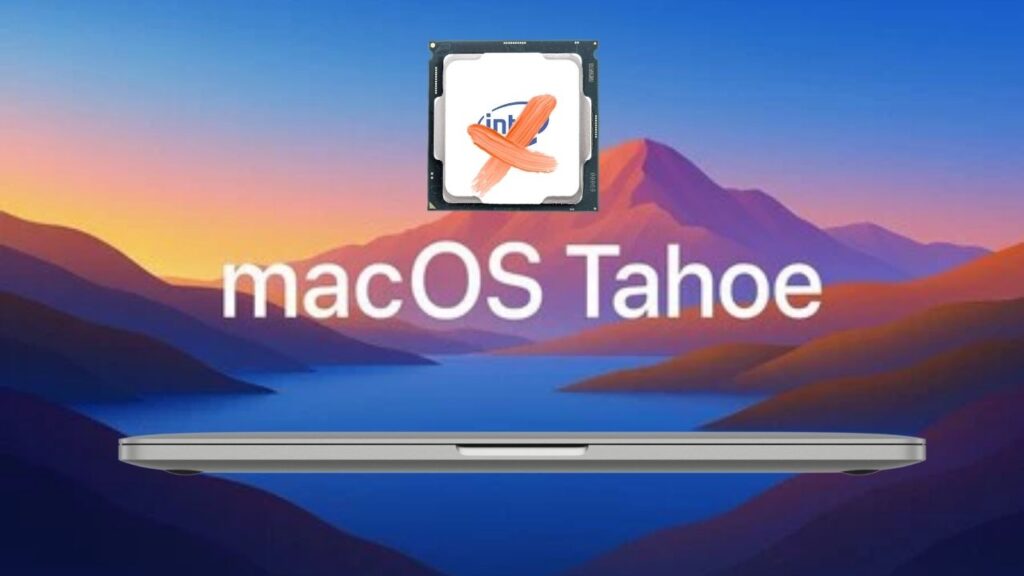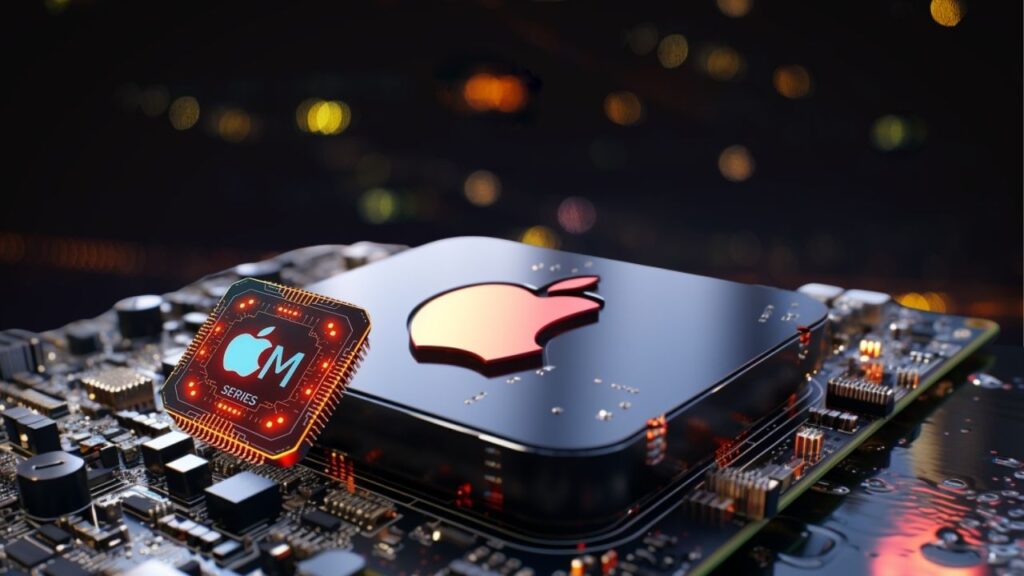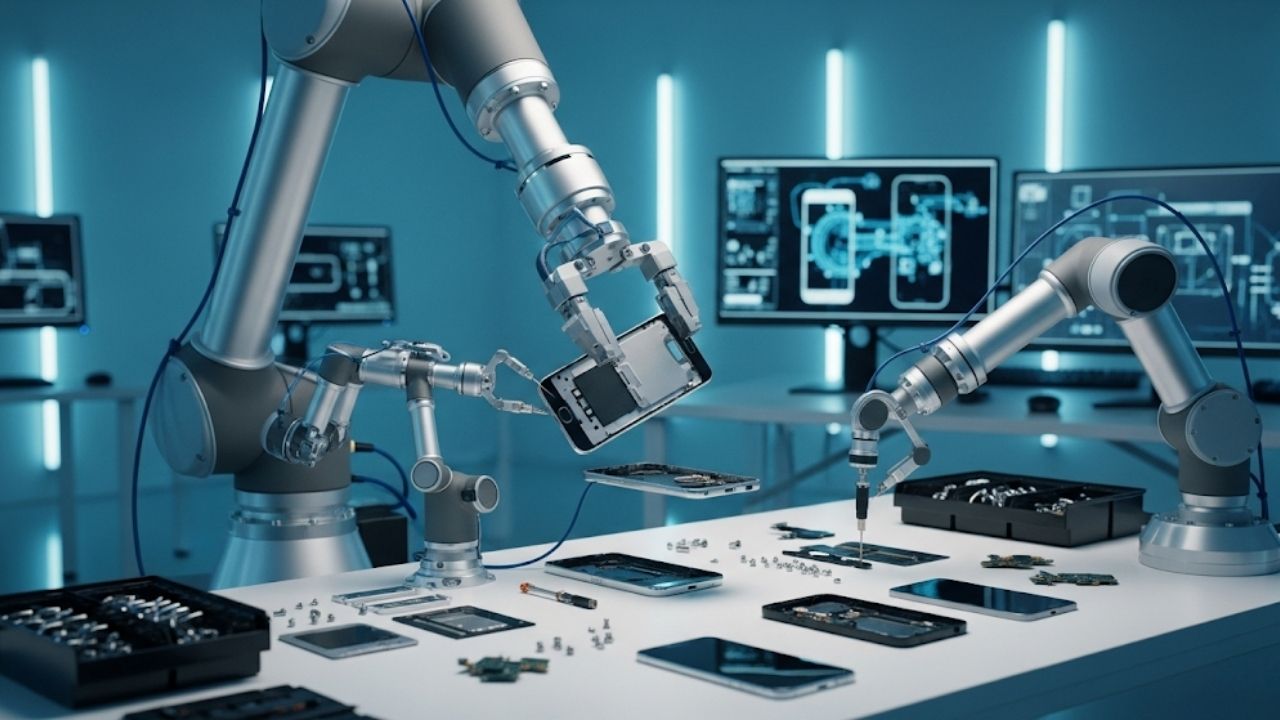Apple to Drop Support for Intel-Based Software on Future Macs: The world of Mac computers is changing in a big way. Apple has announced that it will soon stop supporting Intel-based software on its Macs, shifting entirely to its own custom-designed chips—known as Apple Silicon—for all future devices. This decision, confirmed at Apple’s Worldwide Developers Conference (WWDC) 2025, means that the next major macOS update after macOS 26 (Tahoe) will only be available for Macs powered by Apple’s own processors, such as the M1, M2, M3, and upcoming M-series chips.

For nearly two decades, Apple relied on Intel processors to power its Mac computers. But in 2020, Apple started a bold new chapter by introducing its own chips, promising better performance, longer battery life, and a smoother experience across all Apple devices. Now, that transition is nearly complete, and Apple is ready to move forward with only its own silicon at the heart of every Mac.
Apple to Drop Support for Intel-Based Software on Future Macs
| Key Point | Details |
|---|---|
| Final macOS for Intel Macs | macOS 26 (Tahoe) is the last major update for Intel Macs |
| Future macOS Support | macOS 27+ will only work on Apple Silicon Macs |
| Apple Silicon Introduction | First Apple Silicon Macs released late 2020 |
| Security Updates | Intel Macs get security updates for at least 3 years after macOS Tahoe |
| Performance Boost | Apple Silicon offers better speed, efficiency, and battery life |
| Professional Impact | Professionals should plan to transition to Apple Silicon for future software support |
| Official Resource | Apple Support: Mac computers with Apple silicon |
Apple’s decision to drop support for Intel-based software on future Macs marks the end of an era and the beginning of a new chapter in computing. By focusing on its own chips, Apple is delivering faster, more efficient, and more innovative Macs than ever before. For users and professionals alike, the transition to Apple Silicon is an opportunity to embrace the future and enjoy the benefits of cutting-edge technology.
Why Is Apple Making This Change?
Apple’s move away from Intel processors is all about control, innovation, and efficiency. By designing its own chips, Apple can make sure every part of the computer—hardware and software—works perfectly together. This is similar to how iPhones and iPads have always worked, leading to amazing performance and battery life.
When Apple first announced the switch in 2020, CEO Tim Cook promised a two-year transition. The first Apple Silicon Macs—the MacBook Air, MacBook Pro (13-inch), and Mac mini—arrived later that year. Since then, Apple has steadily replaced every Intel Mac with a new model powered by its own chips.
Apple Silicon is based on ARM architecture, which is the same technology used in most smartphones. This makes Macs faster, more power-efficient, and allows them to run cooler and quieter—sometimes even without a fan.
What Does This Mean for Mac Users?
If you own an Intel-based Mac, you’re not going to be left behind overnight. macOS 26 (Tahoe) will be the last major update for your device, but you’ll still receive security updates for at least three years after that. This gives you plenty of time to plan your next move.
For most people, the biggest change will be when they want to upgrade to a new version of macOS or buy a new Mac. Starting with macOS 27, only Apple Silicon Macs will be able to get the latest features and updates. If you rely on your Mac for work, school, or creative projects, you’ll want to make sure your next computer is powered by Apple Silicon.
How to Tell if Your Mac Uses Intel or Apple Silicon
It’s easy to check which kind of processor your Mac has:
- Click the Apple menu in the top-left corner of your screen.
- Select “About This Mac.”
- Look for “Chip” or “Processor.”
- If you see “Chip” and a name like “Apple M1” or “Apple M2,” you have an Apple Silicon Mac.

- If you see “Processor” and a name like “Intel Core i5” or “Intel Core i7,” you have an Intel-based Mac.
Practical Advice for Users and Professionals
If you’re still using an Intel Mac, here’s what you should consider:
- Check Compatibility: Make sure your favorite apps and software work on Apple Silicon. Most major apps, like Microsoft Office and Adobe Photoshop, already do.
- Plan Your Upgrade: Think about upgrading to an Apple Silicon Mac before your current device stops getting security updates. This will keep you safe from online threats and ensure you have access to the latest features.
- Back Up Your Data: Always back up your important files before switching to a new computer.
- Explore Trade-In Options: Apple and many retailers offer trade-in programs that can help you save money on your next Mac.
For professionals, especially those in creative fields, software development, or business, the transition to Apple Silicon is a big deal. The new chips offer faster performance, better battery life, and new features that can help you work more efficiently.
Step-by-Step Guide: Preparing for the Apple Silicon Transition
Here’s a simple guide to help you get ready for the switch:
- Identify Your Mac’s Processor
- Use the “About This Mac” method above to check if you have an Intel or Apple Silicon Mac.
- Check App Compatibility
- Visit the websites of your favorite apps to see if they support Apple Silicon.
- Look for the “Universal” or “Apple Silicon” label in the App Store.
- Back Up Your Data
- Use Time Machine or another backup method to save your files.
- Plan Your Upgrade
- Decide when you want to buy a new Mac. Consider the timing of security updates and new macOS releases.
- Explore Trade-In and Recycling Options
- Apple and other retailers often offer discounts or recycling programs for old devices.
- Set Up Your New Mac
- Use Migration Assistant to transfer your files, apps, and settings from your old Mac to your new one.
The Future of Apple Silicon
Apple isn’t stopping with the M1, M2, or M3 chips. The company is already rolling out the M4 chip in new Macs, with a focus on improved artificial intelligence (AI) features and even better performance. The M5 chip is expected to launch in late 2025, starting with the MacBook Pro, and will bring even more speed and efficiency to Apple’s lineup.
Apple Silicon is here to stay, and it’s changing the way we think about personal computers. With each new generation of chips, Macs become more powerful, more efficient, and more integrated with the rest of the Apple ecosystem.
Quantum Algorithms Solve 40-Year Puzzle in Quasicrystal Structure
Reusable Future for Carbon Fibre Composites Unlocked by New Method
Quasiparticle Chirality and Electron-Phonon Interactions Drive Novel Material Phases
FAQs About Apple to Drop Support for Intel-Based Software on Future Macs
Q: Will my Intel Mac stop working after macOS Tahoe?
A: No, your Intel Mac will still work after macOS Tahoe, but it won’t get new macOS features. You’ll still receive security updates for at least three years.
Q: How do I know if my Mac uses Intel or Apple Silicon?
A: Go to the Apple menu > About This Mac. Look for “Chip” (Apple Silicon) or “Processor” (Intel).
Q: Can I still use my favorite apps on Apple Silicon Macs?
A: Most major apps already support Apple Silicon. Check with the app developer if you’re unsure.
Q: When should I upgrade to an Apple Silicon Mac?
A: Plan to upgrade before your Intel Mac stops getting security updates, usually within three years after macOS Tahoe.
Q: What are the benefits of Apple Silicon?
A: Apple Silicon offers better performance, longer battery life, and tighter integration between hardware and software.
Q: Will Apple still sell Intel Macs?
A: No, Apple has stopped selling new Intel Macs and is only releasing new models with Apple Silicon.










